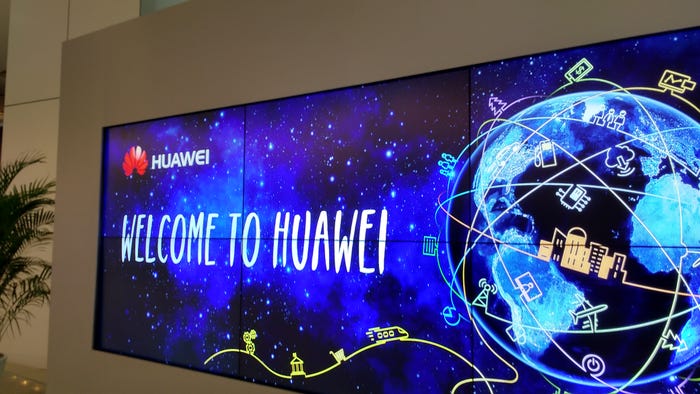Facing up to digital transformation; the evolution of managed services
The advent of the internet has been lauded by some as technology’s great stride forward, it has also created a new demographic which is changing the way the world operates; say hello to the millennials.
October 20, 2016

EXECUTIVE INTERVIEW
The advent of the internet has been lauded by some as technology’s great stride forward, it has also created a new demographic which is changing the way the world operates; say hello to the millennials.
According to Huawei’s President of Assurance and Managed Services Leroy Blimegger, the new digitally demanding demographic is not only changing the customer-provider dynamic, it’s also creating the need for digital transformation within today’s businesses.
“When I started my career at Motorola there was no internet, there was no world wide web,” says Blimegger. “We grew up in an era when there was no such thing as a smartphone; we had a different view on the world because we use the technology available to us as an add-on.
“When it comes to the millennials, and in fact customers for the next few generations, they have a different view on life. Their life is connected, they don’t consider technology as an add-on; they consider it a requirement. However, the millennials were our own creation.”
A lot of the apparent progress made over recent years has been innovation for the sake of innovation, and this is a trend which is unlikely to change any time soon.

Huawei’s President Of Assurance And Managed Services Leroy Blimegger
“The industry is its own worst enemy,” says Blimegger. “We do things because we can, and sometimes we don’t ask whether we should. As we move from HD to 4K to 8K we have demonstrated what we can do, but how many people need 8K on their phones? We’ve created the demand and the challenges ourselves. But as we have seen for generations, build it and they will come, even if there is not a business case for it.”
Blimegger, who has worked for Huawei for almost 10 years now, knows more than most how the industry has evolved since its inception. While managed services maybe one of the more prominent cards in the Huawei deck now, the business unit itself is only ten years old.
“In 2005 we had our first managed service customer, PBTL in Bangladesh, but we didn’t even have a managed services team, it was just part of professional services” said Blimegger. “At that time the concept of managed services was focused exclusively on Total Cost of Ownership reduction. Do what we’re doing now but do it cheaper was the rule.
“This model was not sustainable. We’d sign a five-year engagement to reduce OPEX by 20%, while maintaining KPIs and SLAs; that was the value proposition. But what about when we renew the contract, what is the new value proposition? Can we commit to another 20% reduction? That model was not sustainable. Managed service vendors were not focused on creating value, but a lock-in situation where it was impossible to insource in the future.
“We saw an opportunity to build a managed services business which does not focus on reduction, but creating new opportunities. We chose to move to a model which focused on Total Cost of Value as opposed to Total Cost of Ownership.”
With Huawei ahead of the curve, the managed services industry as a whole moved towards the position of value creation. That is not to say cost is no longer a factor, efficiencies will always be sought, however the new proposition focuses on creating value for the customer whether this is improving customer experience, better usage of data in decision making or organizational restructures.
To help operators meet their ICT transformation requirements Huawei Managed Services has continued expand its focus to the IT domain, evolving from the traditional mobile, fixed network managed services offering to IT&CT integrated operations. The team has invested substantially in the IT domain to provide various services focused on operational standardization and automation, helping carriers to improve efficiency and assure quality of service.
A prime example is the work with Sunrise in 2012. The project started in the CT domain to provide E2E MS for future network evolution. The success of this project led to the renewal of the contract, where Huawei was asked to take care of Sunrise IT infrastructure and operations of IT systems. After a stabilization period, work will begin not only on IT transformation, but also an overall transformation from separate CT and IT managed services through to an integrated ICT managed services strategy. This example demonstrates the evolution of the Huawei managed services strategy.
 Although the industry has gradually understood what value means, the concept of creating new money as opposed to reducing spend is still difficult to grasp in some organizations. The introduction of the internet, and more specifically cloud computing, has levelled the playing field meaning many traditional business models are no-longer relevant in the digital era.
Although the industry has gradually understood what value means, the concept of creating new money as opposed to reducing spend is still difficult to grasp in some organizations. The introduction of the internet, and more specifically cloud computing, has levelled the playing field meaning many traditional business models are no-longer relevant in the digital era.
“As we move forward, we all have to accept our role in the industry has to change,” says Blimegger. “Digital transformation is coming up, but a lot of people need to ask what it actually means.
“In short, it means something different to everyone. It depends on where you are and where you want to be. The industry is about to embark on a transformational journey, and the scale of this transformation is more than anything we’ve seen before.”
The last 20 years have seen a huge number of changes, from analogue to digital to 2G to 3G to 4G and now 5G. For Blimegger, this next stage in the evolution of the industry is more significant than ever before.
“For the previous stages we were simply adding some new skills sets into the equation,” says Blimegger. “We needed to learn a little bit more about air interface algorithms or little bit more about how to do capacity management, but in general it was smooth. Now we’re looking at an unprecedented scale of change.
“Moving to SDN, decoupling hardware and software so we can properly implement virtualized network functions, moving from 5 billion connected devices to 50 billion, having different SLAs and KPIs and different availability requirements for various different types of sensors.
“I think the customers as well as the vendors are just starting to realize that while there is technology in the transformation, this is not about technology transformation. This is about business transformation, this is about organizational transformation and it’s a mind-set transformation.”
The human side of digital transformation is often overlooked, perhaps because is seen as a soft topic in an industry primarily driven by absolutes. However, the human element of the business is now more important than ever, and this has an impact on the structure of the business not only on what technology is implemented.
“Focusing on automation, we are nowhere near where we need to be,” says Blimegger. “Automation is currently based on a set of static rules and the benefits are limited. We’re taking engineers away from the process, and asking them to check the resources to make sure the automation is working properly. There is a small cost saving, but from a risk mitigation perspective, you still have human interaction.
“By utilizing the data available and taking advantage of the intelligence which is available in all the devices down the line to dynamically update the rules, there will be a significant difference. For this too be a reality, machine learning is a must. We’re not taking live data from the network and running it through a live analytics machine, but we’re getting there.”
 One of the main challenges for Blimegger and his customers is the digitization process. Operators around the world should ask how well they know their networks; when was the last time the network was audited? Is there a complete inventory of all components throughout the network? How many components need to be upgraded for the IoT driven world?
One of the main challenges for Blimegger and his customers is the digitization process. Operators around the world should ask how well they know their networks; when was the last time the network was audited? Is there a complete inventory of all components throughout the network? How many components need to be upgraded for the IoT driven world?
“If you do not have an inventory management system which can reach every element of your network and understand what you really have, you don’t know what might or might not have an impact on the automation process,” says Blimegger. “There could be issues being generated without anyone realizing it because there isn’t a complete understanding of what is in the network.”
The industry is not going to change overnight, but for Blimegger there needs to be significant change. Intelligent automation needs to happen to meet the demands of the customer. The structure of the organization needs to change to allow for intelligent automation and the mind-set of the individuals needs to evolve to allow the structure to change. All-in-all, digital transformation is the only way to deliver the results in the digital economy.
Read more about:
DiscussionAbout the Author(s)
You May Also Like











_1.jpg?width=700&auto=webp&quality=80&disable=upscale)


.png?width=800&auto=webp&quality=80&disable=upscale)